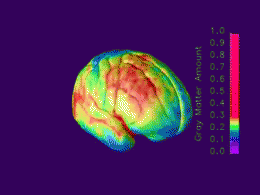عمر عقلي

العمر العقلي يعني درجة ذكاء الفرد بالنسبة بالنسبة إلى الافراد في نفس سنه, فمثلا عندما نقول ان عمره العقلي 9 سنوات فيعني أنه يتجح في اختبارات الذكاء التي يجتازها طفل عمره 9 سنوات, والعمر العقلي يستخدم في قياس نسبة الذكاء IQ وذلك بقسمة العمر العقلي على العمر الزمني وضرب الناتج في 100
. . . . . . . . . . . . . . . . . . . . . . . . . . . . . . . . . . . . . . . . . . . . . . . . . . . . . . . . . . . . . . . . . . . . . . . . . . . . . . . . . . . . . . . . . . . . . . . . . . . . . . . . . . . . . . . . . . . . . . . . . . . . . . . . . . . . . . . . . . . . . . . . . . . . . . . . . . . . . . . . . . . . . . . .
تاريخ
النظريات المبكرة
During much of the nineteenth century, theories of intelligence focused on measuring the size of human skulls.[1] Anthropologist well known for their attempts in correlating cranial size and capacity with intellectual potential are Samuel Morton and Paul Broca.[1]
النظريات المعاصرة
The limitations of the Standford-Binet caused David Wechsler to publish the Wechsler Adult Intelligence Scale (WAIS) in 1955. These two test were split into two different ones for children. The WAIS-IV is the known current publication of the test for adults. The reason for this test was to score the individual and compare it to others of the same age group rather than to score by chronological age and mental age. The fixed average is 100 and the normal range is between 85 and 115. This is a standard currently used and is used in the Stanford-Binet test as well.[2]
انظر أيضاً
الهامش
- ^ أ ب Stoslopf, Alan (16 December 2009). "Theories of Intelligence". In Provenzo Jr., Eugene R.; Provenzo, Asterie B. (eds.). Encyclopedia of the social and cultural foundations of education. Thousand Oaks, CA: SAGE Publications, Inc. pp. 441–444. ISBN 9781412963992. Retrieved 25 March 2014.
{{cite encyclopedia}}: Cite has empty unknown parameter:|trans_title=(help) - ^ Cherry, Kendra. "History of Intelligence Testing". Retrieved 8 April 2014.